I used to dread opening my pantry. It was always messy, and I could never find what I needed.
Cans were stacked on top of each other, snacks were shoved in the back, and spices would fall out if I touched one.
Does this sound familiar? I finally got tired of the clutter and decided to fix it. The good news? It didn’t take fancy tools or a big budget, just some smart ideas and a little time.
In this blog, I’m sharing easy pantry organizing ideas that really work. These tips helped me create a pantry that’s neat, simple, and easy to use every day.
You don’t need to be a pro to get it right. I’ll walk you through each idea step by step. If I can do it, you can too. Let’s turn your pantry into a space you’ll actually enjoy opening.
Why Pantry Organization Matters
A messy pantry can slow you down. You might waste time looking for things or buy items you already have but can’t find. I used to do that a lot, only to find the same can hiding behind a stack of boxes.
When your pantry is clean and organized, it’s easier to cook, plan meals, and even make your grocery list.
You know what’s running low and what’s already in stock. That means fewer trips to the store and less food going to waste.
It also saves money. You won’t double up on items you forgot you had, and you’ll spot what needs to be used before it goes bad.
Most of all, a neat pantry feels good. It reduces stress and makes your kitchen feel calmer and more in control. A few small changes can make a big difference every single day.
Pantry Organizing Ideas That Actually Work
Keeping your pantry organized makes daily life easier. You save time, money, and stress when you can see what you have and know where everything goes. These ideas are simple and practical. Just pick a few and start today.
1. Start with a Clean Slate
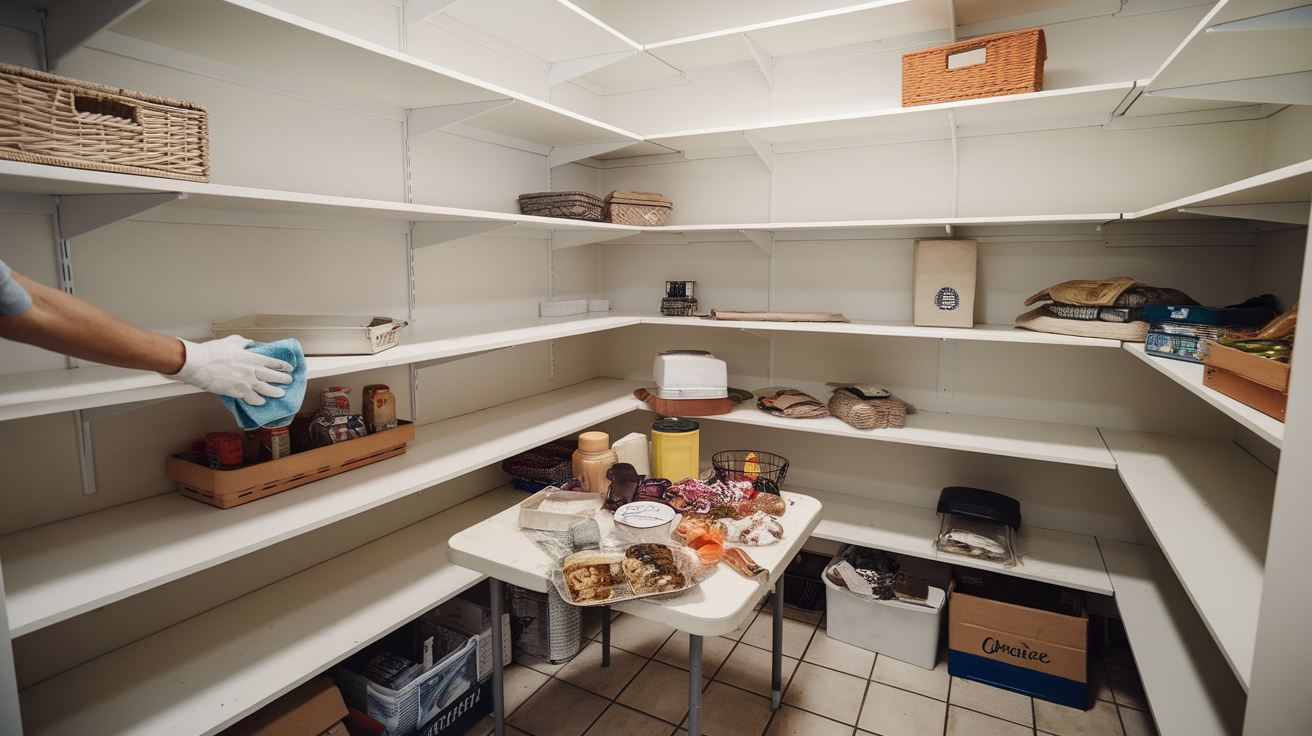
Before you organize anything, remove everything from your pantry. I mean everything: cans, boxes, bags, and jars.
Wipe down the shelves with warm water and a gentle cleaner to remove any crumbs or sticky spots.
As you clear things out, check expiration dates. Toss anything that’s expired or no longer fresh.
Group similar items together as you go, like all your baking stuff or snacks. Starting with a clean pantry helps you see the space clearly and plan how to make it work better.
2. Sort Items by Category

Organizing your pantry by grouping similar items together can help. For example, you can group all your baking ingredients, snacks, canned goods, and breakfast items in separate piles.
This step also shows you if you’re buying too much of one thing or missing something you need.
Once I sorted things out, I realized I had three open bags of rice. Keeping categories clear helps you find things quickly and restock smarter.
3. Use Clear Storage Bins
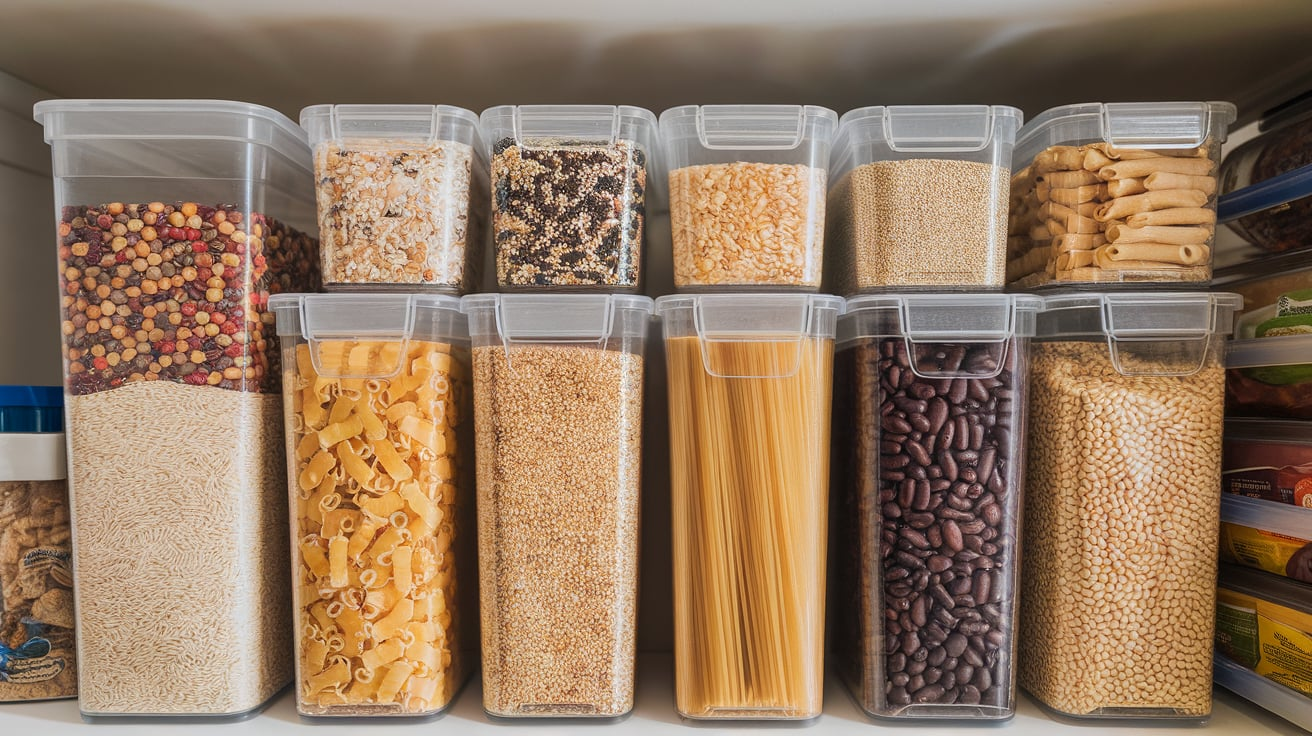
Clear bins make it easy to see what’s inside without digging. They’re great for holding snacks, grains, or pouches that often slide around.
You can slide them out, grab what you need, and put them back with no mess. They also catch any crumbs or leaks, so your shelves stay cleaner longer.
I started with just a few bins, and now they’re one of my favorite tools for keeping things neat.
4. Label Everything
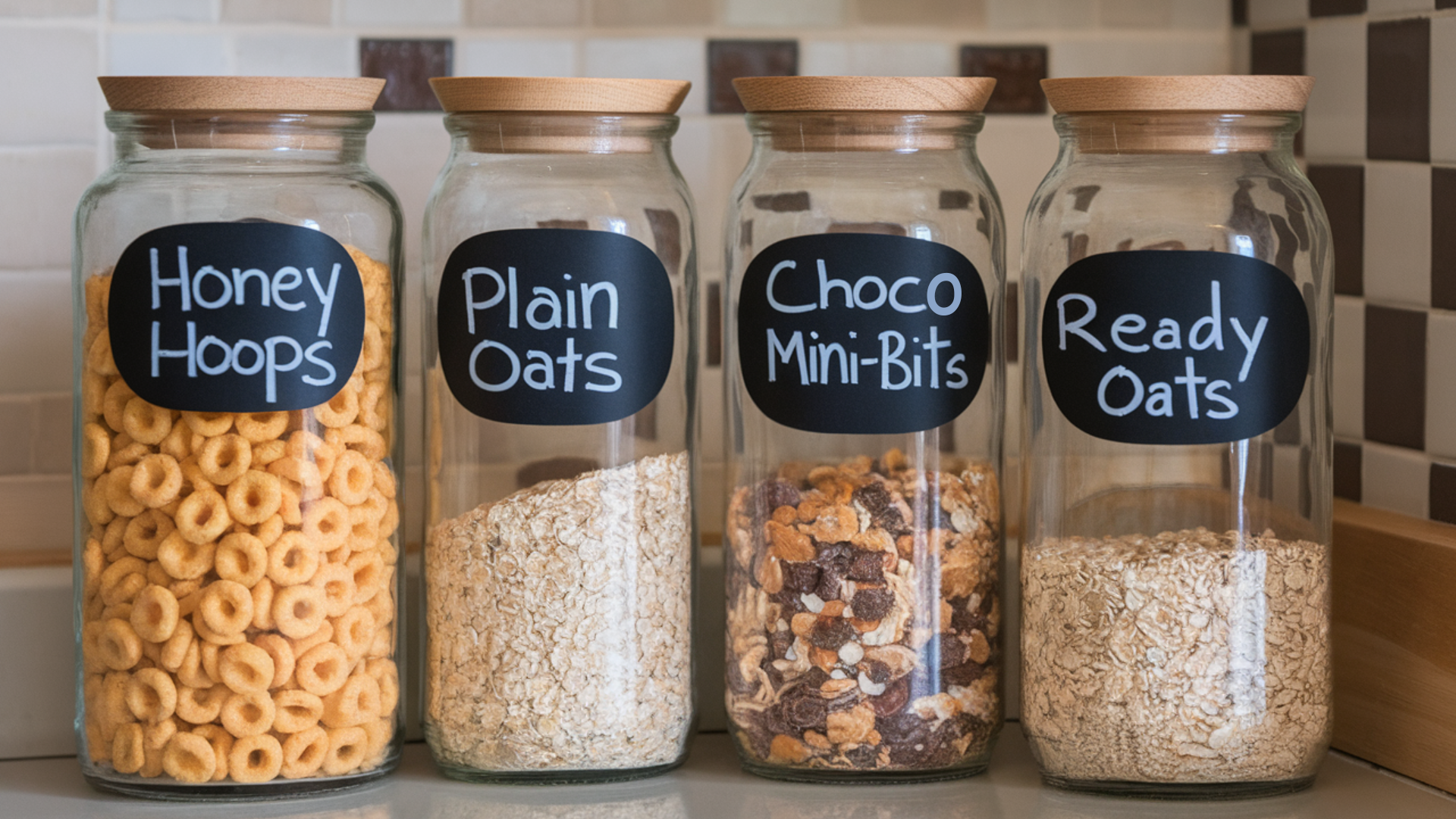
Labels help keep everything in the right place. You can label bins, jars, shelves, or drawers with words like “Snacks,” “Pasta,” or “Baking.”
It’s great for families because everyone knows where things go, even kids.
I added labels to my pantry, and now we waste less time looking for stuff. You don’t need anything fancy, just tape and a marker work well too.
5. Use Stackable Containers

Stackable containers save space and stop clutter. They let you use the full height of each shelf without piling bags on top of each other.
Use them for cereal, flour, sugar, or dried beans. I replaced a bunch of floppy packaging with tall, stackable bins, and it made my shelves look clean and tidy.
They’re also easier to refill and help you see what you’re running low on.
6. Use Glass Jars for Dry Goods

Glass jars are perfect for oats, rice, pasta, and other dry goods. They keep food fresh and let you see exactly how much you have left.
You can reuse jars from sauces or jams, which also saves money. I started saving my glass jars and using them in the pantry, and it made the shelves look more organized.
A simple label finishes the look.
7. Add Lazy Susans

Lazy Susans (turntables) are great for deep corners or shelves. You can store sauces, jars, or condiments on them and spin to reach what you need.
This keeps items from getting pushed to the back and forgotten. I added one in a tight corner, and now I don’t have to knock over five things just to get to the soy sauce.
They work really well in small spaces.
8. Use Drawer Organizers for Small Items
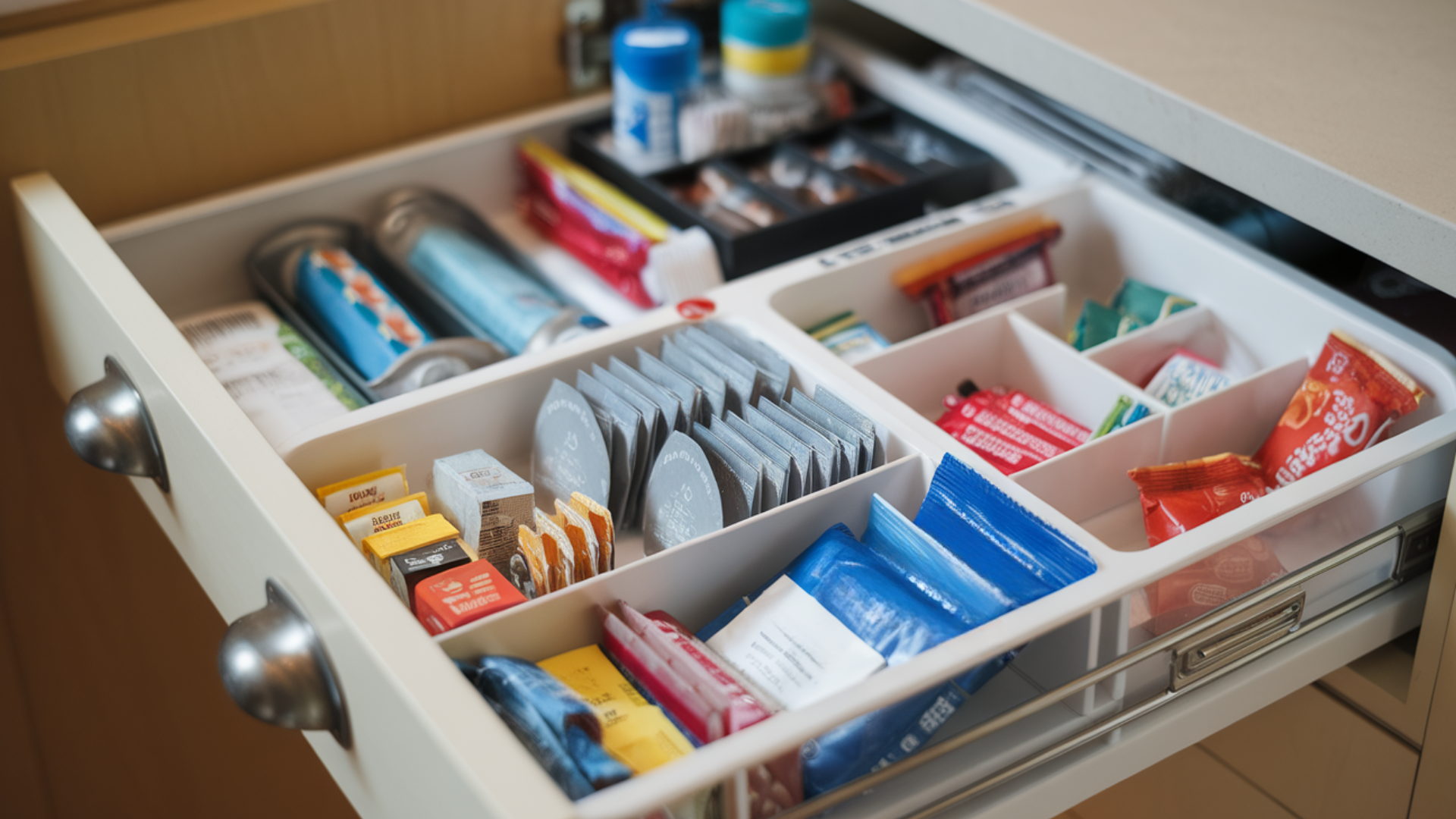
Little things like spice packets, tea bags, or soup mixes get lost easily. Using a drawer organizer or small bins keeps these items tidy and easy to reach.
You can group by type or size and keep them from sliding around. I used an old cutlery tray and turned it into a mini organizer on one shelf.
Now I can find what I need without any digging.
9. Store Heavy Items on Lower Shelves
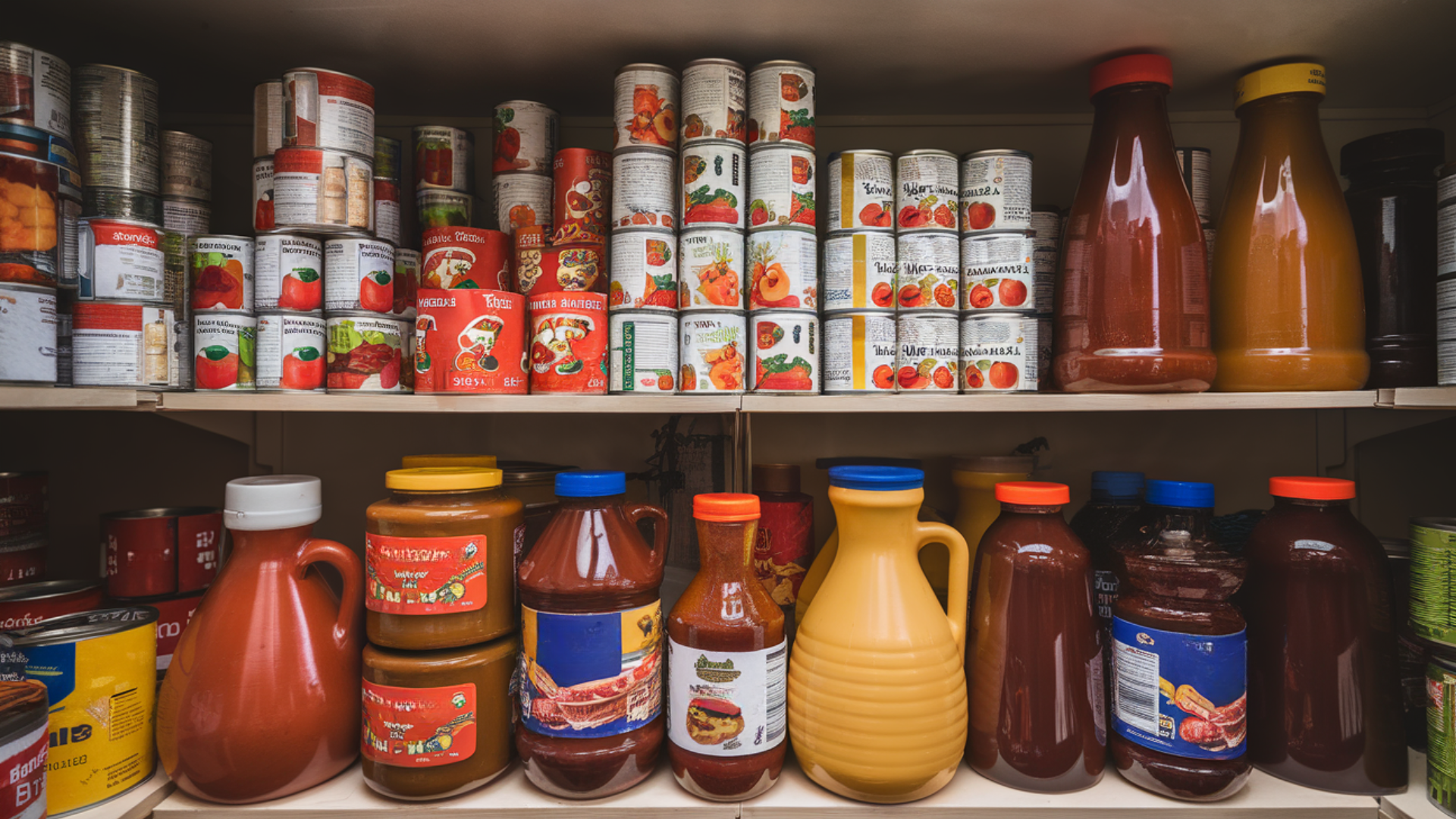
Heavy items like canned goods, jars, and bottles should go on the bottom shelves. It’s safer, easier to lift, and prevents accidents from things falling.
You can also use the floor space for bulk items like water or oil. I moved my heavy cans down low, and it made the whole pantry feel more balanced.
This tip helps with both safety and organization.
10. Use Baskets for Bulk Items
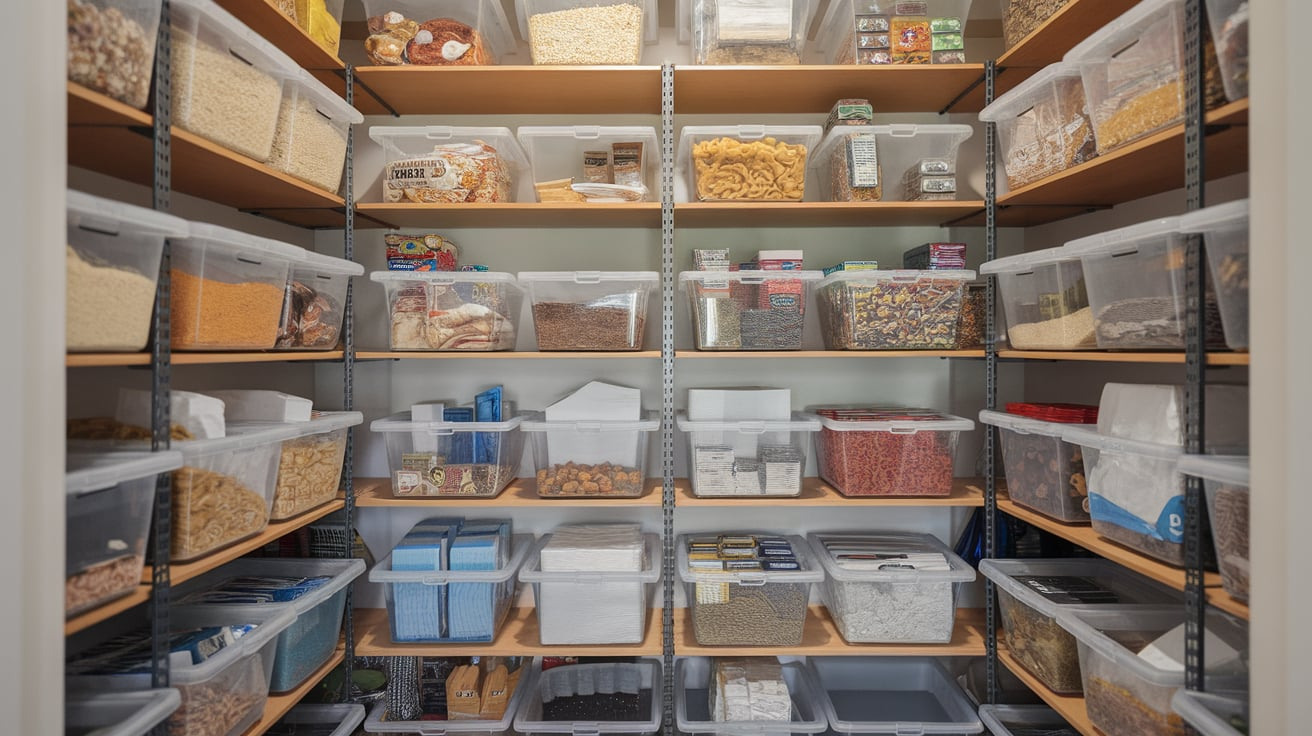
Baskets are great for loose or bulky items like chip bags, paper goods, or extra snacks. They act like drawers, you just pull them out and take what you need.
It also helps keep similar items grouped together. I started using plastic bins for big snacks and drinks, and it made everything feel more under control.
Baskets also make deep shelves easier to manage.
11. Group Snacks by Type

Keeping all the snacks together by type makes things so much easier. Chips go in one bin, granola bars in another, and sweet treats in a third.
This makes grabbing a quick snack simple and avoids messy shelves. Kids and guests can find what they want without searching.
I used to mix snacks together, but sorting them made the pantry feel much calmer.
12. Set Up a Kids’ Snack Zone
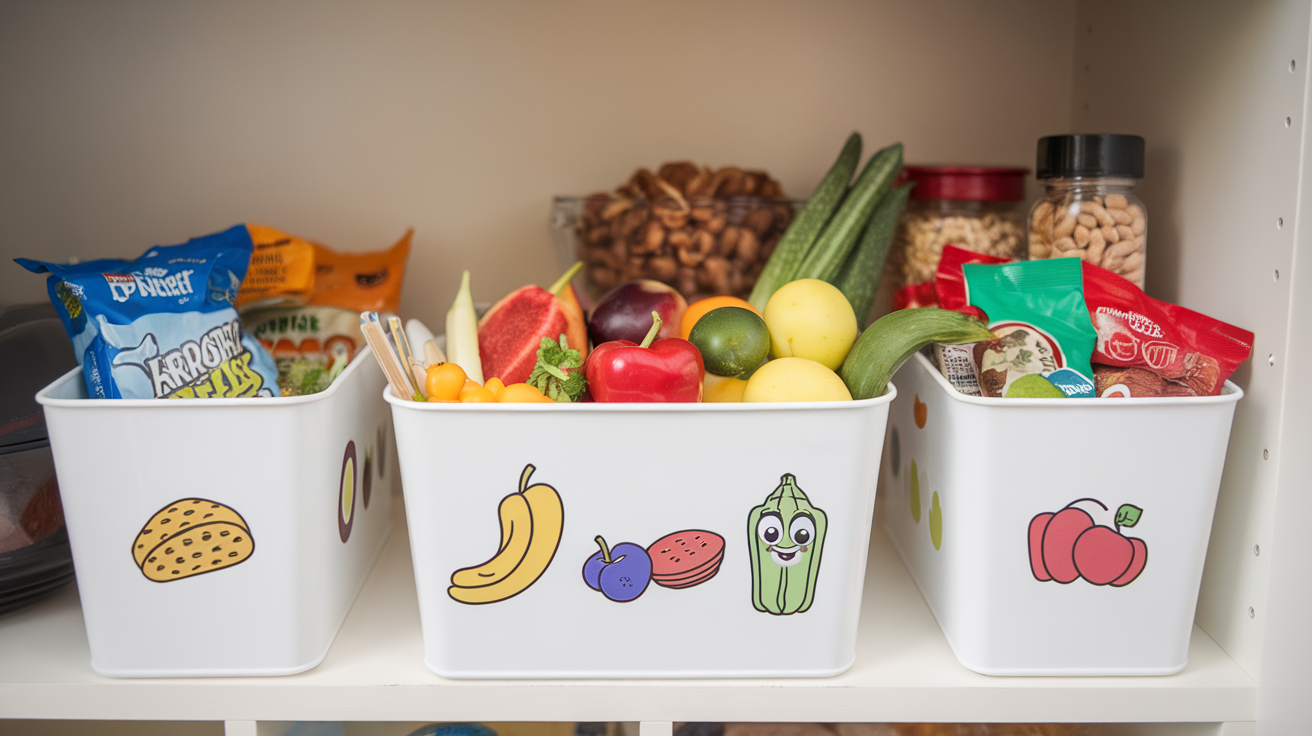
A low shelf with snacks just for kids helps them stay independent and keeps the rest of the pantry in order.
Healthy snacks like fruit cups or crackers can go into small bins that they can reach. This also stops little hands from pulling things off upper shelves.
I made a small snack bin just for my kids, and it’s been a game changer.
13. Keep a “Use First” Bin
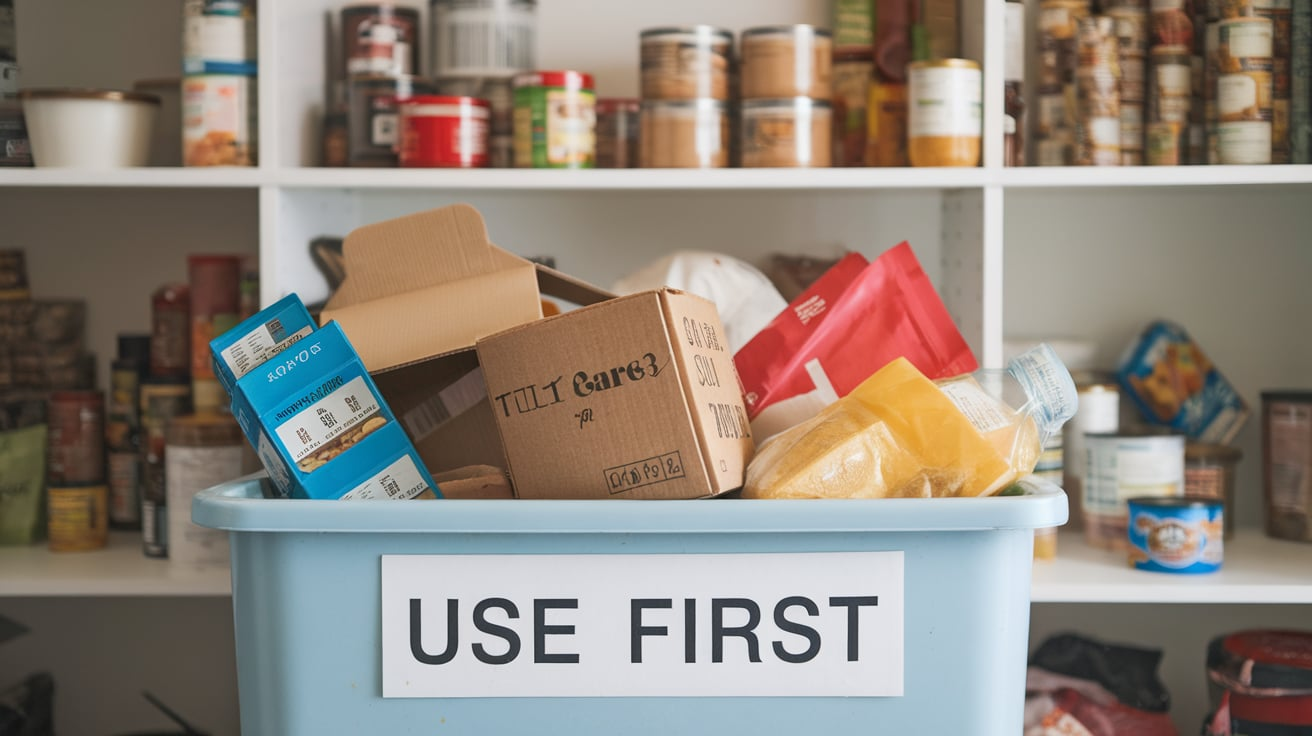
A bin labeled “Use First” is a great way to reduce waste. You can place items that are already open or close to their expiration dates in it.
This keeps food from getting lost and forgotten at the back of the pantry. Everyone in the house knows to check this bin first before opening something new.
I added a small basket with a sign, and it really helps me stay on top of things.
14. Store Like Sizes Together
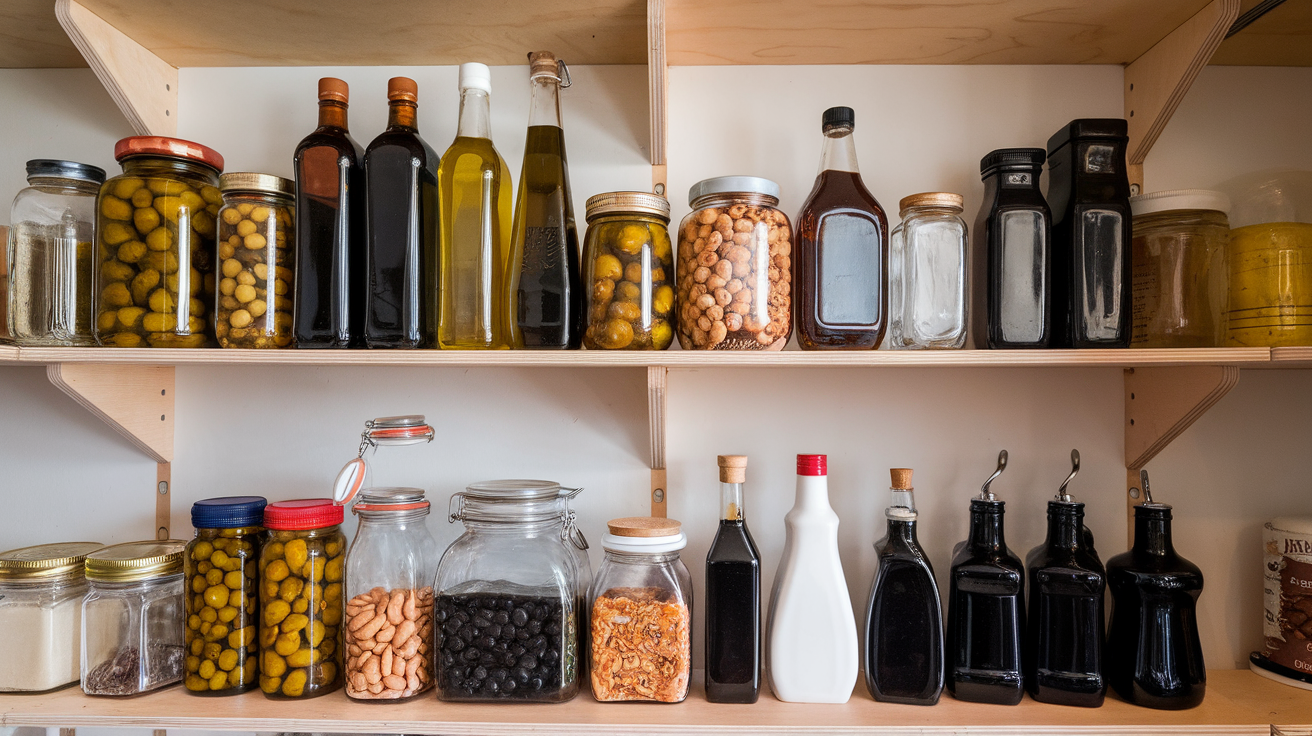
Lining up tall bottles with tall bottles and short jars with short jars helps make more room and keeps everything looking neat.
It’s also easier to stack or place items without worrying about things tipping over. This small trick gives the pantry a more organized look.
I didn’t realize how helpful it was until I tried it and saw the difference.
15. Add Shelf Risers

Shelf risers add a second level to your shelf space, making it easier to see and reach items in the back.
They’re perfect for cans, spice jars, or small containers that get lost behind taller items. You don’t have to move five things to get to one can.
I added one to my shelf, and now I can see all my soups and beans at once.
16. Use Over-the-Door Racks
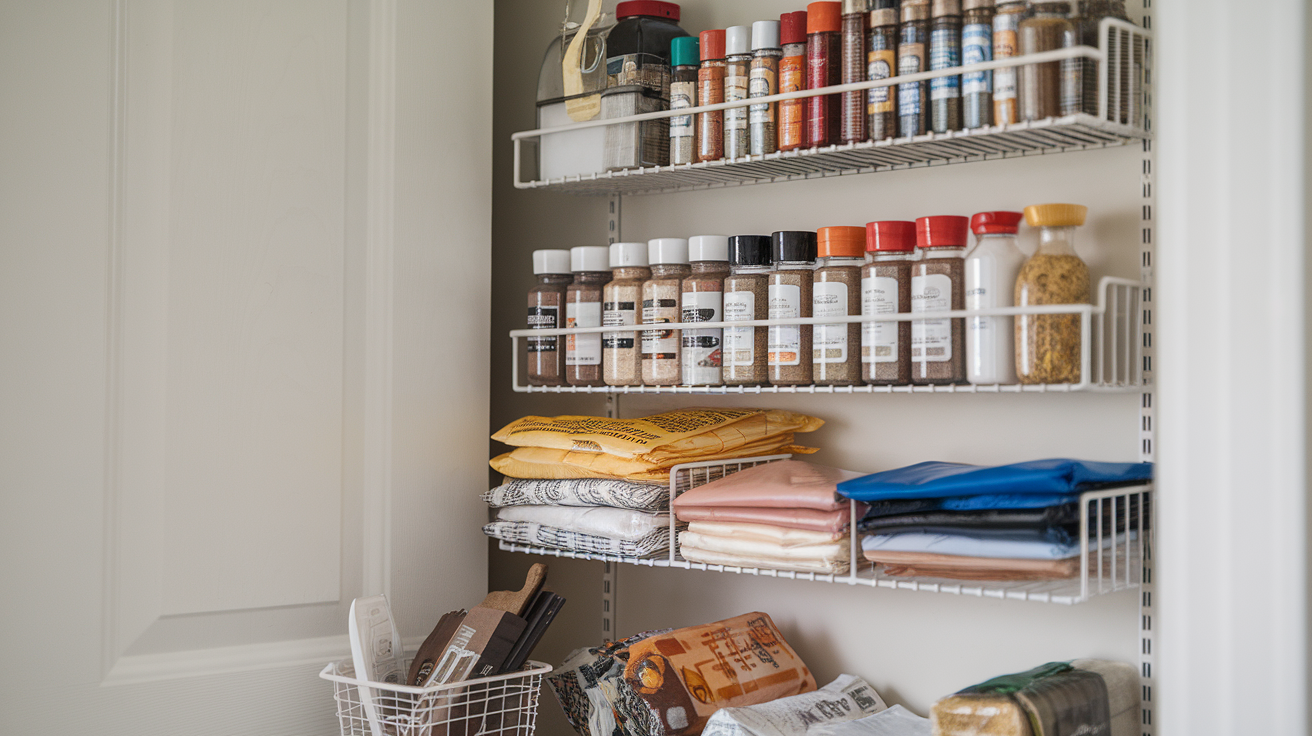
The back of the pantry door is often wasted space, but it’s great for extra storage. You can use a hanging rack to hold spices, wraps, or small jars.
This opens up more shelf space inside the pantry. I found a rack that fits perfectly, and now it holds all my extra seasonings and snacks.
17. Use Magazine Holders for Wraps
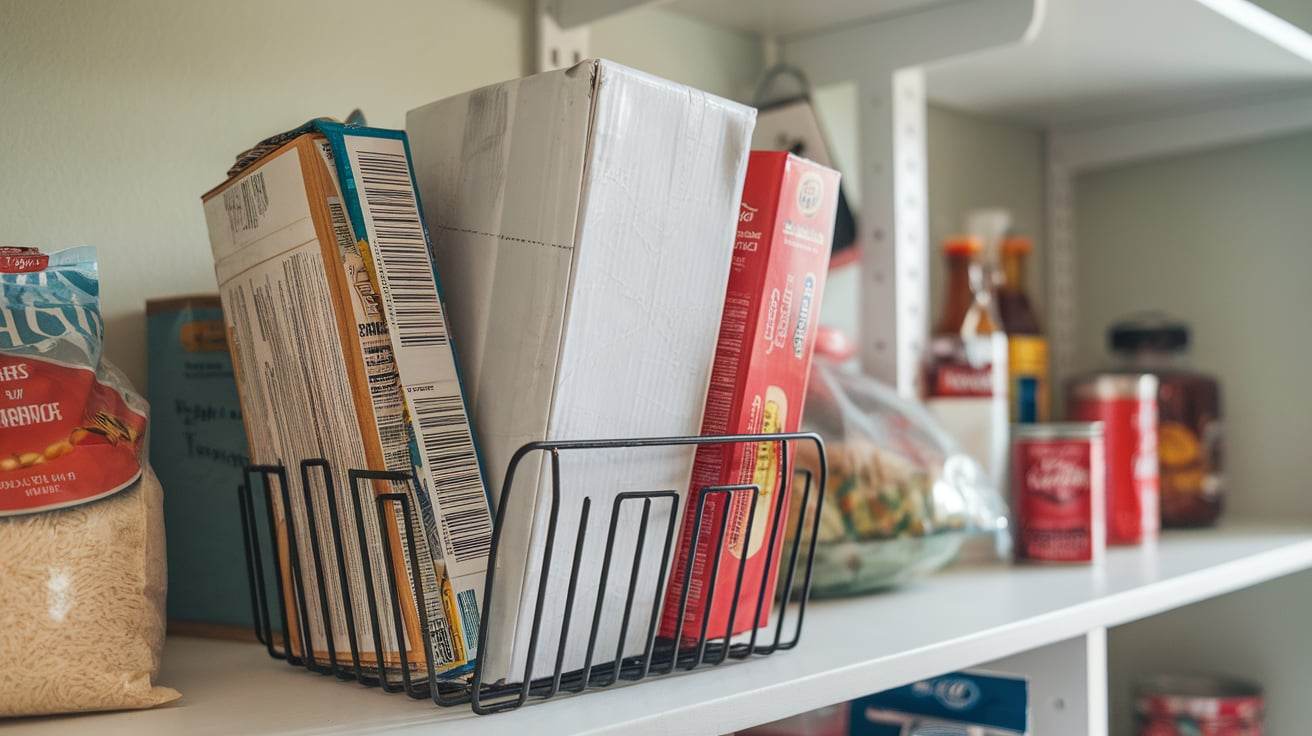
Instead of letting plastic wrap and foil boxes slide all over the shelf, stand them upright in a magazine holder.
It keeps them in one spot and makes it easy to grab the one you need. This idea also works for water bottles or snack bags.
I used an old holder I already had, and it fits perfectly on the lower shelf.
18. Hang Hooks for Bags or Utensils

Small hooks on the pantry wall or door can hold reusable bags, aprons, or kitchen tools. They help use wall space that usually gets ignored.
You don’t need tools; just peel-and-stick hooks work fine. I added a few to the inside of my pantry door, and now everything has its place.
19. Store Baking Sheets Vertically
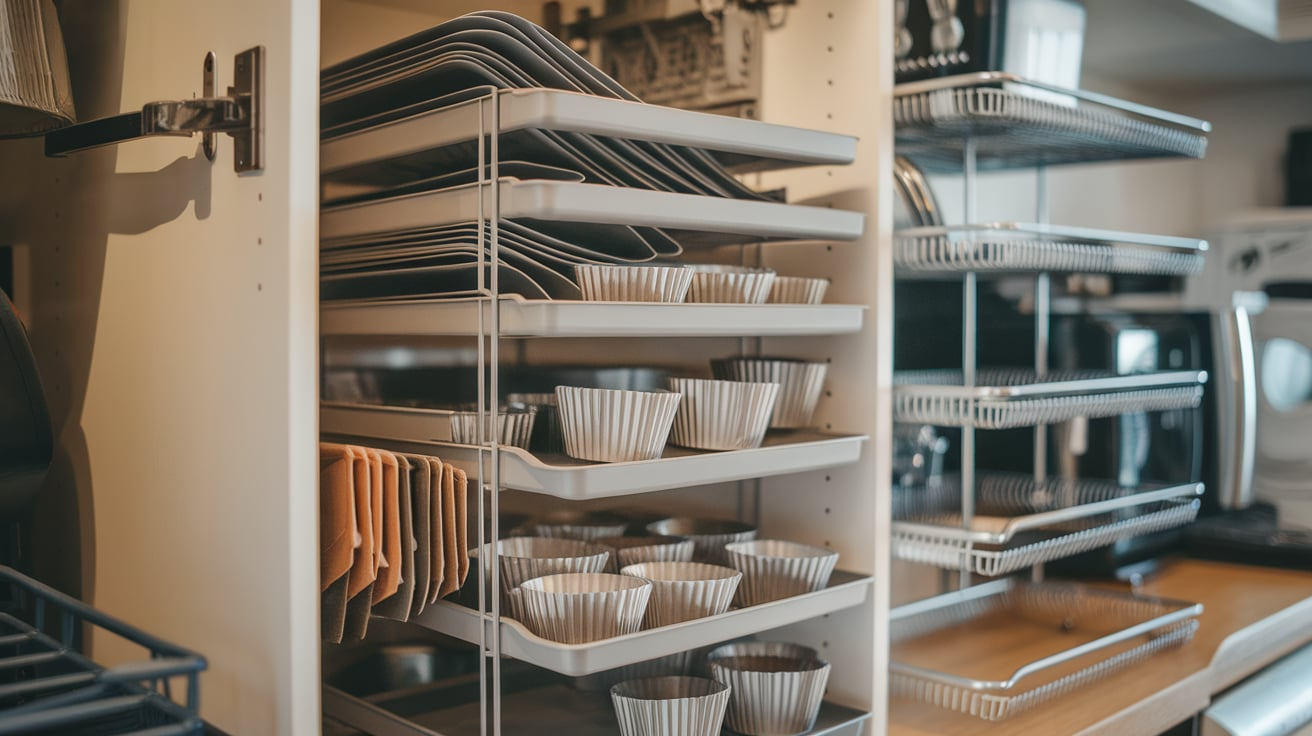
Instead of stacking cookie sheets and pans flat, store them on their sides using a rack or divider.
It’s much easier to pull one out without moving the whole pile. This works well in deep cabinets, too. I set up a simple wire rack, and now grabbing a sheet is quick and easy.
20. Keep Spices in One Spot
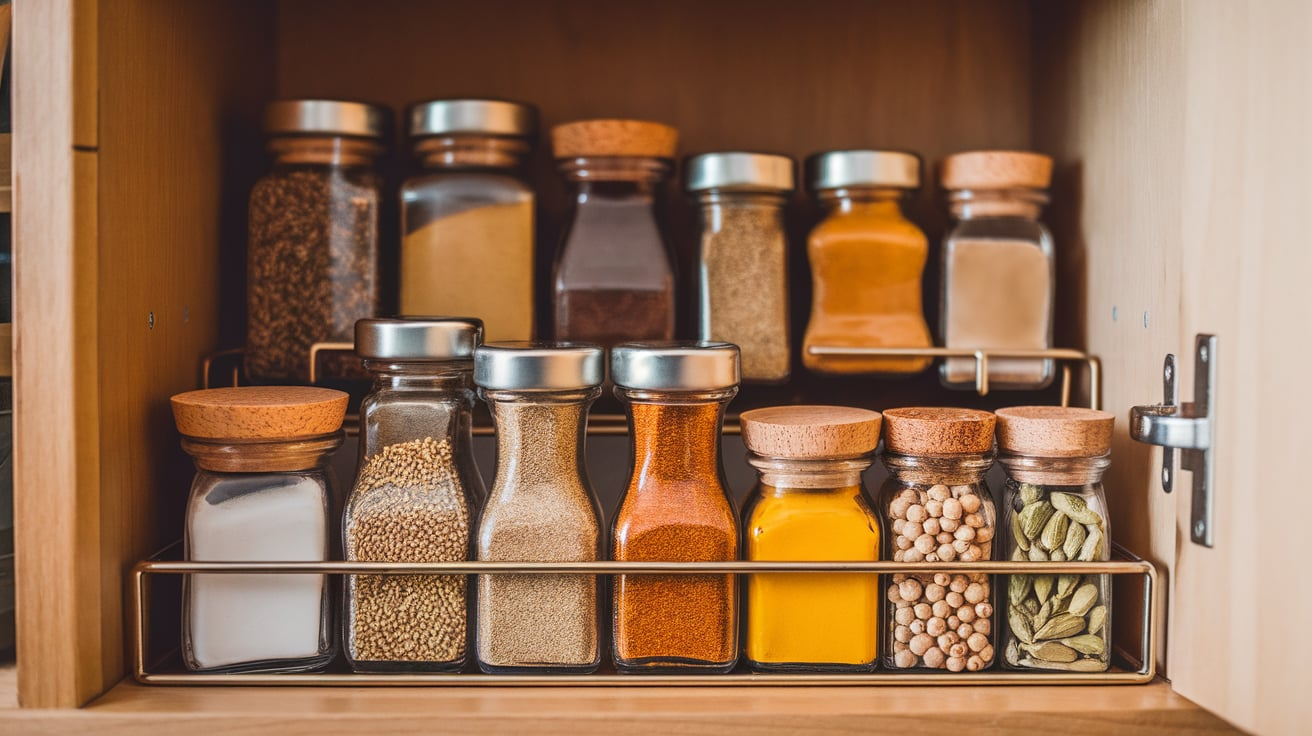
Spices spread across the pantry can cause clutter and confusion. Keeping them all in one place makes cooking easier and faster.
Group spices using a spice rack, tiered shelf, or small drawer. I created a little spice corner, and it’s been so helpful during meal prep.
21. Write an Inventory List
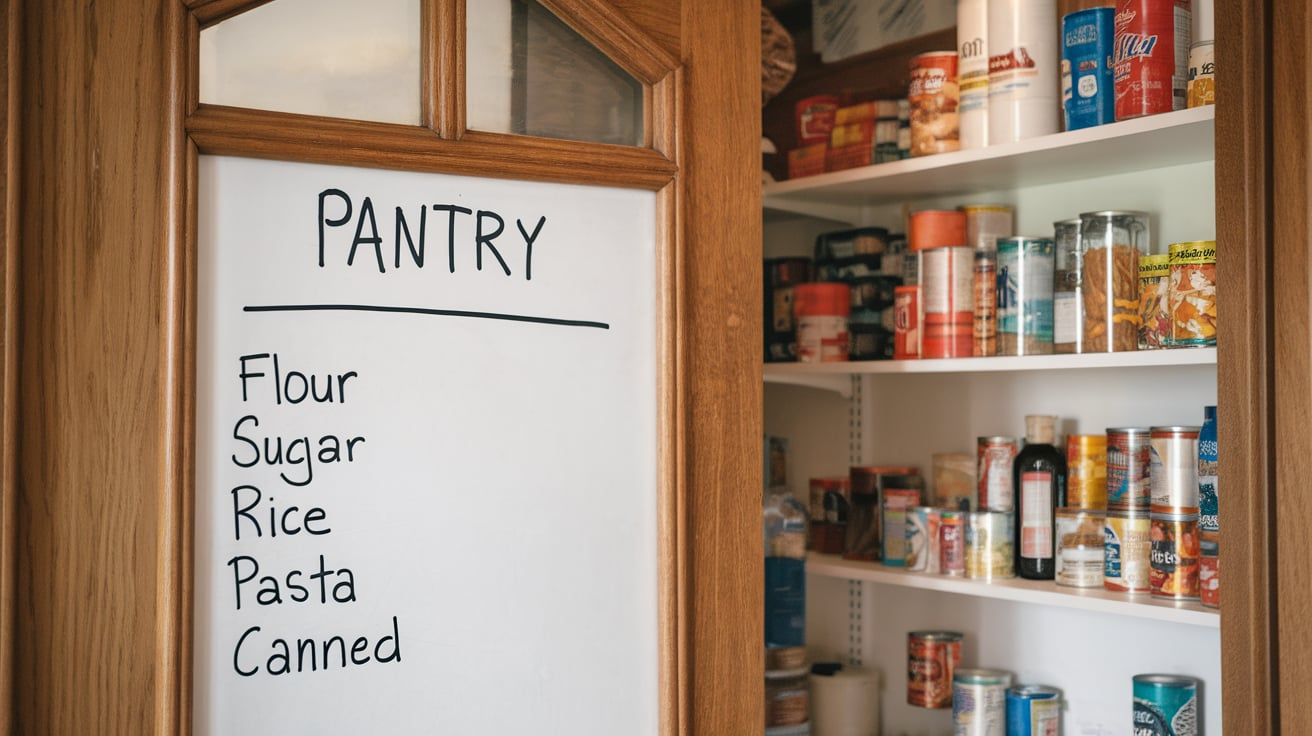
An inventory list helps you keep track of what’s in your pantry. It can be written on paper, a chalkboard, or even a dry-erase board stuck to the door.
When something runs out, mark it down. This stops you from buying items you already have. I added a list inside my pantry door, and it’s made grocery trips faster and smarter.
More Pantry Ideas to Keep You Organized
You’ve already seen some of the best tips to get your pantry in shape. But there’s still more you can do to keep it looking clean, working well, and easy to use.
These extra ideas are just as simple and useful. Try the ones that fit your space and routine best.
23. Use Tiered Can Organizers
Tiered organizers let you stack cans on different levels, so you can see what’s at the back without moving everything in front.
This setup keeps things neat and saves time during meal prep. It also helps prevent food from going bad. I added a 3-step riser, and now I can see all my soups and vegetables at once.
24. Create a Breakfast Bin
Mornings can be busy, but a breakfast bin keeps things simple, store cereal, granola bars, oats, and syrup all in one place.
This makes it easier to grab what you need without thinking. I put a small bin on the middle shelf, and now my family knows where breakfast starts.
25. Create a Meal Prep Zone
Keeping your most-used cooking items together saves a lot of time. Rice, oil, spices, and dry beans can all stay in one small area.
When it’s time to cook, everything is right there. I built a little meal prep zone with clear bins, and it’s helped me cook faster and easier.
26. Store Backstock in a Different Bin
When you buy extra food in bulk, it can clutter your main shelves. Use a separate bin or box just for backup items.
You can refill the main area when something runs out. I use a bin on the floor for extras, and it keeps my main space clear and easy to use.
27. Keep Pet Food in a Sealed Bin
Pet food can spill or go stale if not stored well. A sealed bin keeps it fresh and keeps bugs out. It’s also neater than keeping a torn bag on the floor.
I bought a lidded container just for pet food, and it fits perfectly in the corner of my pantry.
28. Try Clip Strips for Snacks
Clip strips let you hang small snack bags on a hook or wall strip. It saves shelf space and makes snacks easy to grab.
These strips work well inside cabinet doors, too. I attached one near my snack zone, and it holds trail mix and chips without taking up extra room.
29. Reuse Jars and Containers
Glass jars from sauces or jelly can be reused for pantry storage. They’re great for nuts, seeds, or spices. Just wash them out and add a label.
I started saving jars instead of throwing them away, and now I have a cute, matching row of storage containers.
30. Rotate Items Often
Older items often get pushed to the back and forgotten. Try putting newer groceries behind the older ones so you use the oldest first.
This stops food from expiring before you notice it. I make a habit of rotating cans and boxes every time I shop, and it works well.
31. Store Bread in a Bread Box
Leaving bread on the counter or stuffed into the pantry can lead to squishing or early spoilage.
A simple bread box keeps it protected and fresh. You can choose a wooden box, a metal one, or a lidded bin. I added a small one to my shelf, and it’s helped keep my loaves soft and neat.
32. Keep Flour and Sugar in Airtight Containers
Flour and sugar often spill from torn bags or boxes. Airtight containers keep them fresh and safe from bugs.
They also make scooping easier when you’re baking. I found two sturdy plastic containers with locking lids, and now my baking shelf is so much neater.
33. Use Matching Containers for a Clean Look
Using containers that match in color and shape makes your pantry look calmer and organized. It doesn’t have to be fancy, keep them simple and similar.
You’ll be surprised how good it looks when everything fits together. I picked up some budget bins in neutral colors, and the whole space feels better.
34. Add Lights Inside Your Pantry
If your pantry is dark, it’s hard to see what you have. Stick-on LED lights help light up the space and make things easier to find.
You can add them under shelves or on the ceiling. I stuck a few battery lights inside my pantry, and now I can see clearly even at night.
35. Reorganize Every Season
Over time, things get out of place, and clutter builds up. Doing a quick reorganization every few months helps you stay on top of it.
Toss old food, wipe shelves, and check labels. I do a 10-minute clean every season, and it keeps my pantry fresh and functional year-round.
Common Pantry Problems and Quick Fixes
Even if your pantry starts off organized, it’s easy for it to get messy again. Some problems show up in almost every home, but the good news is they’re simple to fix. This is how:
- You can’t see what’s in the back: Use shelf risers or lazy Susans to raise items or spin them into view. This helps you stop losing things and makes every shelf easier to use. I added a riser for my canned goods, and now I can see every label.
- Items keep falling over: Use bins or containers to group loose items and give them boundaries. This prevents jars or packets from tipping or sliding. I noticed fewer spills after switching to plastic bins for my snacks and oils.
- You keep buying things you already have: Make a running list of pantry items or keep a small dry-erase board nearby. Check it before grocery shopping. I started doing this and stopped buying the same pasta three weeks in a row!
- Food goes bad before you use it: Create a “Use First” bin and rotate older items to the front. Make a habit of checking dates monthly. I toss expired items every season and use the bin to remind me what needs to be eaten soon.
- Pantry looks messy after one week: Set a weekly 5-minute tidy-up routine. Push things back into place, wipe crumbs, and restock empty bins. I do this every Sunday night, and it helps me start the week feeling more organized.
Conclusion
A clean and organized pantry makes life easier every single day. You can find what you need fast, save money at the store, and waste less food at home.
It also makes cooking feel less stressful and more fun. You don’t need to spend a lot of money or buy fancy containers to get started. Just start with one or two small changes and build from there.
When I first cleaned out my pantry, I didn’t think it would make such a big difference, but it really did.
Now I can open the door, grab what I need, and get back to cooking without the mess. Bins, labels, and a few smart habits helped me stay on track.
Try the tips that make sense for your space and routine. Over time, your pantry will become a place that works for you. And once it’s organized, it’s much easier to keep it that way.

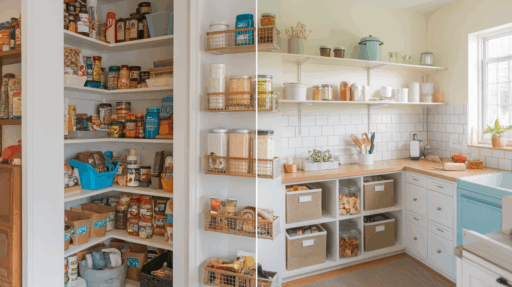





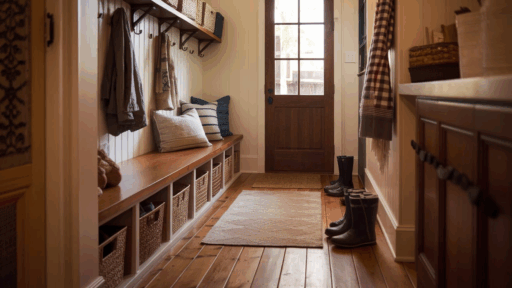
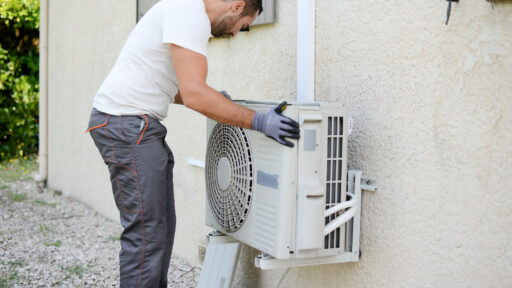
Wonderful this is just what i need Im clean but not tidy and battle to keep my home looking tidy and i realky need your help I can take pictures and you can suggest what you think Im trying to also keep old bread to feed the sparrows,and i dont have a bin to put it in so its on my kitchen counter for me to take when i go out to sprinkle it in tiny specks for the sparrows to come and eat and i love it when they come I dont have hanging space nor closets yet to put my clothes in yet
Should i put the old bread in a plastic bag to make it look tidier But where can i store it My kitchen is small